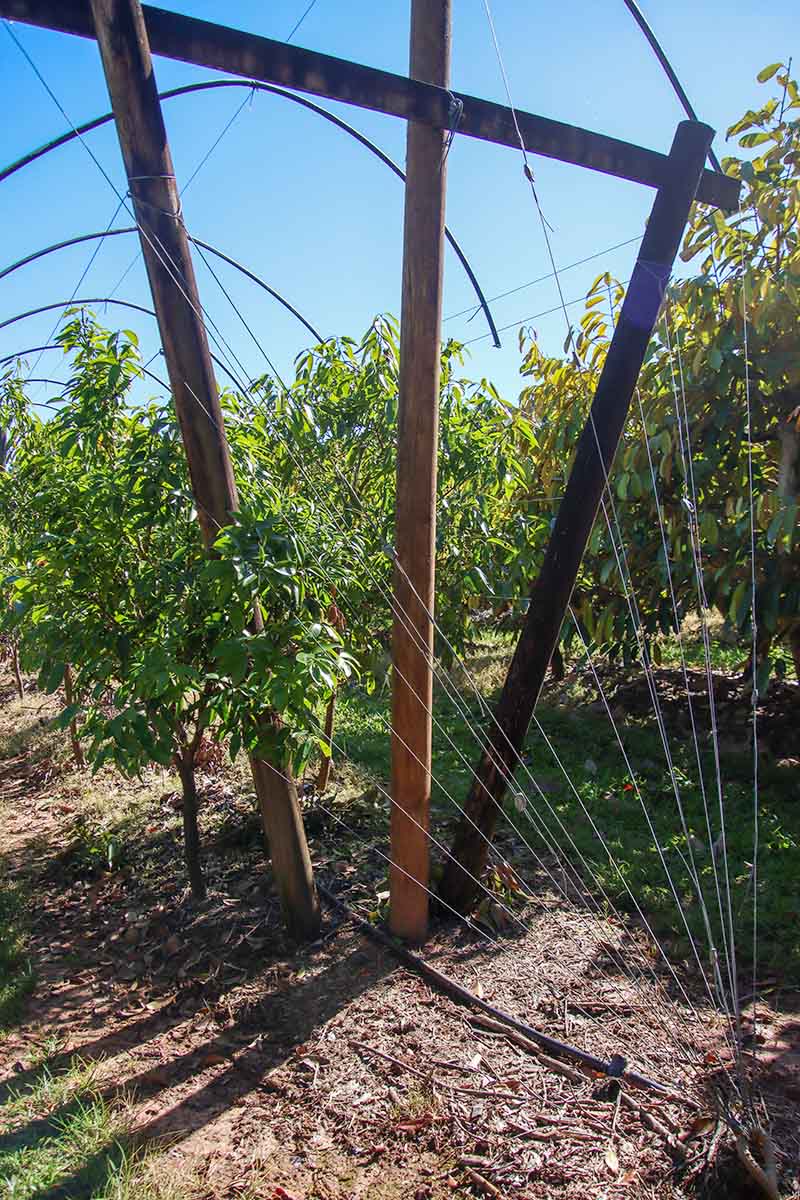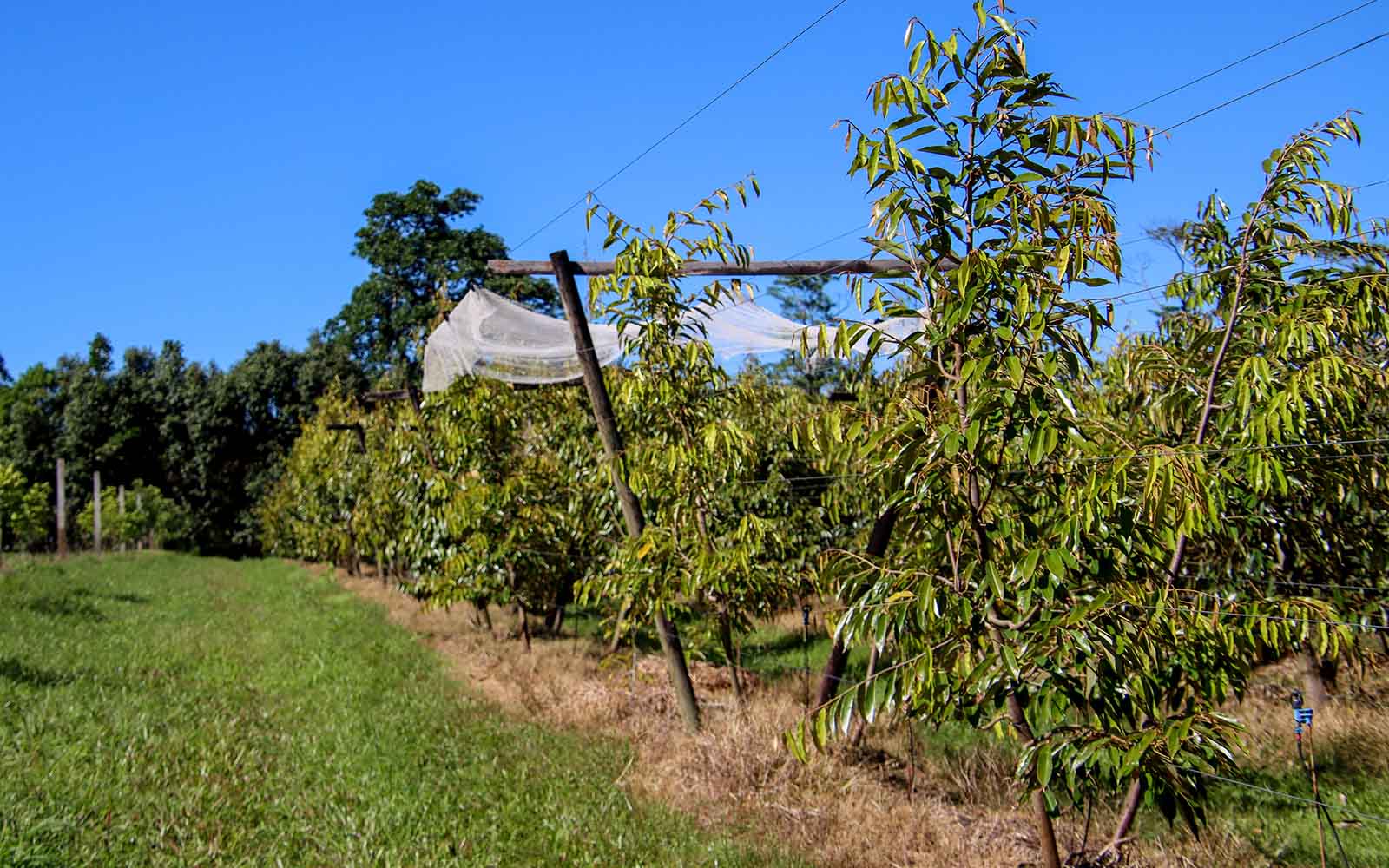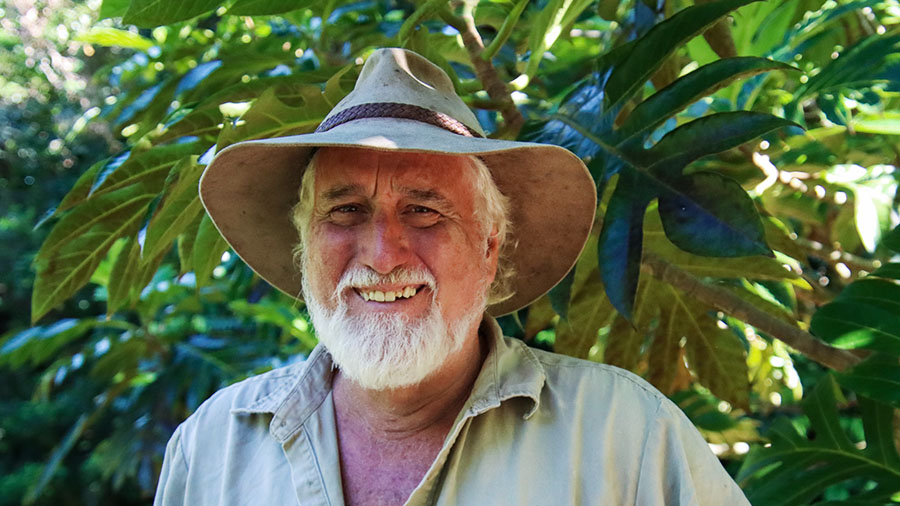1: Do your research and see what's worked for other people
After the damage from Cyclone Larry, Peter and his wife, Alison, toured orchards in southern Australia that already use trellising systems.
In southern Australia, stone fruit trees are trellised to allow more light in, making it easier to access branches for harvest and improve crop efficiency. Peter planned to access those benefits while also strengthening trees and preventing them from being blown away in a cyclone.
Peter and Alison travelled extensively, learning from a number of farmers and academics about different types of trellising and how they could implement it on their farm. Peter also says where the information comes from is also important. While academics and agronomists provide valuable insight, first-hand knowledge from farmers of whatever you're investigating is vital, and often provides the realistic perspective you need.
'Look at people who are successful in what they're doing, they're the ones you've got to take notice of'
'Look at people who are successful in what they're doing, they're the ones you've got to take notice of,' Peter says. Peter and Alison researched not just the ideas, but the numbers and the plan on how they could build the infrastructure on their property before going forward with it.
2: If you've got an idea, ignore the doubters and start experimenting
 The main style of trellising they use is the Tatura trellis, where the frame creates a 60 degree V shape.
The main style of trellising they use is the Tatura trellis, where the frame creates a 60 degree V shape.
When Peter and Alison started installing trellising with their fruit trees, they only told one person - their next door neighbour. Peter wanted to avoid the negativity and doubt from those he told, knowing that most people would raise concerns as to why the ideas wouldn't work. 'Most people want to stay the same,' he says.
Rather than second guess their research and ideas, they decided to go ahead with the process and trial it without external pressures and doubts. 'We just did it, and we never looked back,' he says.
But while they didn't want to have doubt put into their minds from external sources, they did hedge their bets, starting with small trials and building their way up. Now they have approximately 80% of their trees grown on some form of post and wire training system.
The main style of trellising they use is the Tatura trellis, where the frame creates a 60 degree V shape, in which trees are trained to create a V shaped canopy. The frame is traditionally timber, with high-tensile wires that are shifted until the trees reach optimal size.
As the trees grow, scaffold branches are trained to follow the bottom wires of the V trellis. The branches are manually manipulated to grow with the wires, with the V shape allowing for higher light intervention and distribution of the tree. The creator of the Tatura orchard system does offer a paid manual on how to adopt the system.
They also use a T-shaped trellis for some varieties, and wire supports that run down the centre of a row of trees.
3: Mental strength and preparedness are important
'I think it's important to leave it there just to remind us it will happen again, we just don't know which year. And we've got to be prepared for it.'
Taped to the fridge in the communal lunch area in Fruit Forest Farms' packing shed are photos of the damage after Cyclone Yasi, a Category 5 that caused $3.5 billion in damage across Queensland in 2011. 'Some people say "oh you should forget about it, you should move on and don't be negative about it," ' Peter says. 'But I think it's important to leave it there just to remind us it will happen again, we just don't know which year. And we've got to be prepared for it.'
 This photo on Fruit Forest Farms' communal fridge serves as a poignant reminder of their resilience and the importance of staying prepared.
This photo on Fruit Forest Farms' communal fridge serves as a poignant reminder of their resilience and the importance of staying prepared.
The inevitability of cyclones means preparedness is essential, Peter says, particularly for those who earn their income from their block of land.
Not only do Peter and Alison use trellising to strengthen their trees but, with enough warning before a cyclone, they also prune excess branches and keep orchards tidy to prevent wind drag. Their greenhouse has detachable shade cloth, which can be quickly removed, and their bird netting is only over trees seasonally, to have less infrastructure likely to be damaged.
Having now prepared for multiple cyclones over the years, the Fruit Forest Farm staff even have a checklist at the back of their minds, which includes things like getting fragile nursery stock safely into cold rooms or vehicles away from the wind before a tropical cyclone hits.
The preparation both mentally and physically grants them peace of mind: that cyclones will come again, but as they have before, they will again survive them.
4: It's an ongoing process - never stop learning
While the Salleras's have now had trellises installed for several decades, they don't see it as a finished, complete project. Just like in all aspects of farming, Peter says he's constantly talking to other people, finding more things to trial and implement, upgrading and improving practices.
Scientist and developer of the Tatura trellising system, Bas van den Ende, has visited their farm several times, which Peter says has been a great opportunity to learn how to better train the trees to grow on the trellis.
As some of the species the Salleras's grow have never been trellised before, they're constantly trialling new ways to train the trees, and in some cases, changing the trellising style to work better for different crops.
'We never know it all, because things are always changing,' Peter says.
5: It's also about financial preparation
But even in preparing a farm to the best of your ability before a cyclone, the clean-up and recovery time can cause havoc to your bottom line. By building disaster preparedness into your business model, Peter says farmers can have less stress when the inevitable occurs.
By building disaster preparedness into your business model... farmers can have less stress when the inevitable occurs
While state and federal governments often offer low-interest recovery loans in the wake of natural disasters, Peter and Alison try to avoid needing to apply for them. The uncertainty of how long it would take for a crop to pay back the loans, especially if hit with another natural disaster, is a risk they don't want to take. Instead, they prefer to have a saved nest egg for when disaster occurs.
One of the available options to do that is through Farm Management Deposits (FMD), which are provided by select financial institutions. The Department of Agriculture and Fisheries describes FMD as a scheme that 'allows eligible primary producers to set aside pre-tax income which they can draw on in future years when they need it, such as for restocking or replanting when conditions start to improve'.
Farm Management Deposits are only eligible to primary producers as individuals, not to companies, and can't exceed $800,000.
More information on Farm Management Deposits is available on the Australian Taxation Office website.





